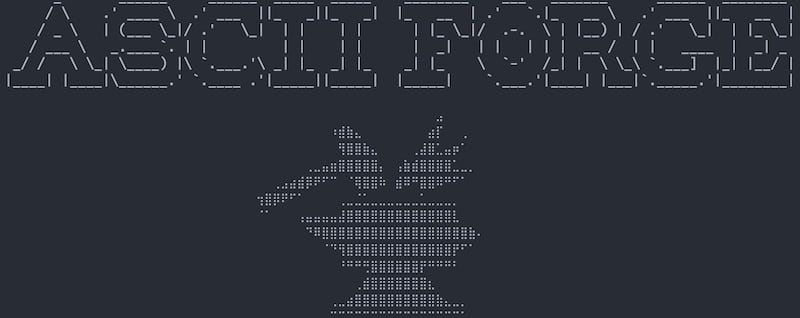22 unstable releases (3 breaking)
| 0.3.0 | Oct 21, 2024 |
|---|---|
| 0.2.13 | Sep 19, 2024 |
| 0.2.12 | Feb 27, 2024 |
| 0.1.71 | Feb 23, 2024 |
| 0.0.0 | Feb 20, 2024 |
#683 in Game dev
Used in idex
54KB
599 lines

Ascii-Forge
An oppinionated terminal canvas rendering engine built off of crossterm with the goal of improving terminal UI/Games without adding any un-needed elements.
Why?
Although other terminal UI Engines already exist, like Ratatui, I felt there was a lot of extra elements that wasn't needed for a small application or game.
As well, there aren't many bare-bones terminal canvas engines with as much flexability as would be needed to make a fun game. In order to acomplish this, all elements of the engine are available, at all times.
But What is Different?
As said before, Ascii-Forge is oppinionated, you don't have a choice of the backend, crossterm is what you get, but it is the best, and one of the only fully cross-platform terminal engines.
To list off some big differences:
- Keeping it as small as possible while still making things easy.
- Absolutely everything used to make the engine available is available to you.
- This means that if the update method doesn't work as expected, you can make your own using the other methods.
- Want to access the stdout that the window is using, use the
io()method!
- Most of the larger engines make their own layout system, this doesn't. You use columns and rows, no extra abstraction on top of this.
Examples
Most of the examples will be found in the examples directory
Simplest Example Included Here.
use std::{io, time::Duration};
use ascii_forge::prelude::*;
fn main() -> io::Result<()> {
// Will init the window for you, handling all required procedures.
let mut window = Window::init()?;
// Ask the system to handle panics for us.
handle_panics();
loop {
// Ask the window to draw, handle events, and fix sizing issues.
// Duration is the time for which to poll events before re-rendering.
window.update(Duration::from_millis(200))?;
// Render elements to the window
render!(window,
vec2(0, 0) => [ "Hello World!" ],
vec2(0, 1) => [ "Press `Enter` to exit!".red() ],
vec2(0, 2) => [
"Render ".red(),
"Multiple ".yellow(),
"Elements ",
"In one go!".to_string()
]
);
// Check if the Enter Key was pressed, and exit the app if it was.
if event!(window, Event::Key(e) => e.code == KeyCode::Enter) {
break;
}
}
}
Documentation
- docs.rs
- Wiki Coming Soon!
Dependencies
~3–12MB
~157K SLoC